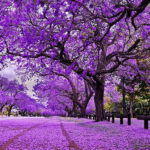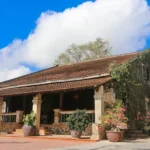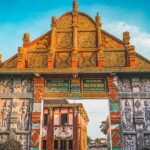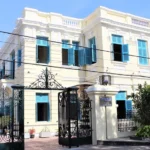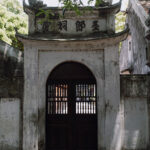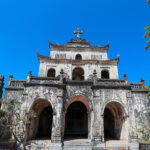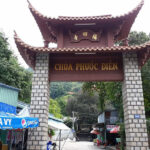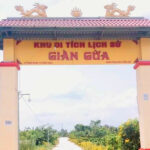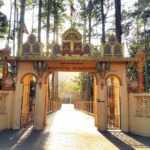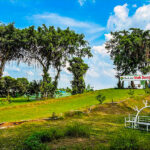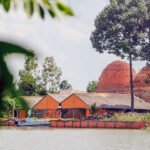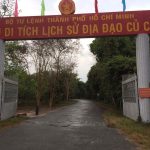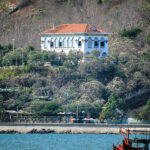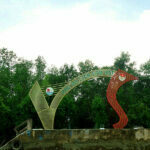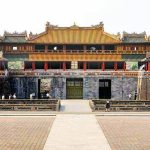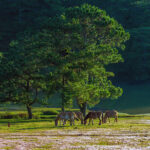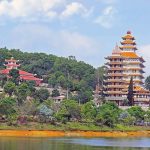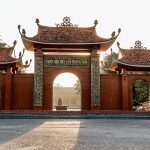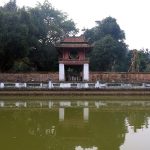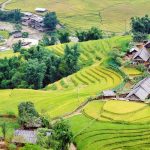Duong Lam ancient village is an ancient village with many unique cultural features. To this day, the village still retains the basic characteristics of an ancient village with communal house, banyan tree, ferry, pagoda… Let’s explore with Vietdreamtravel the cultural heritage and unique architecture at this famous place!
General information about Duong Lam ancient village
Duong Lam ancient village (Vietnamese: làng cổ Đường Lâm; làng cổ meaning ancient village) is located about 44 km west of Hanoi city center, in Son Tay town, Hanoi. Although often called an ancient village, in fact, Duong Lam does not have only one unique village but included 9 villages belonging to Cam Gia Thinh commune, Phuc Tho district, Son Tay town, of which 5 villages are Mong Phu, Dong Sang, Cam Thinh, Doai Giap and Cam Lam adjacent to each other.

These villages are linked together into a unified entity with many customs, practices and beliefs that have not changed for hundreds of years. In particular, this place is also known as the “land of two kings” because it is the birthplace of Phung Hung and Ngo Quyen.
Currently, Duong Lam village is still retaining most of the basic characteristics of an ancient village with a system of village gates, banyan trees, water wharves, communal house yards, wells, rice fields, pagodas, shrines, guard posts, and hills.

When exploring Hanoi, this is definitely an interesting place to visit.
– Entrance fee: 20.000VND/person
– Parking fee: 10.000VND/person
– Bicycle rental: 30.000 – 50/hour or 80 – 100k/day.
Unique architectural heritage of Duong Lam ancient village
Stepping into Duong Lam, the first is the Mong Phu village gate built in 1833 with arched architecture and laterite layer next to the banyan tree over 300 years old creating a truly peaceful and ancient landscape.

This village is called “laterite village” because of wherever you go, you will see houses built with this type of stone. Below are still clean brick-paved roads, on both sides are dark yellow laterite walls, making the space even more peaceful and serene.
Ms.Dien ancient house
The Ms.Dien ancient house is famous with 200-year-old ancient architecture with the moss layers or the style of home decoration. Indispensable specialties to invite visitors from the house owner, which are traditional guava leaf tea and Lam cake.

On a rainy and cold day, drinking a cup of hot tea and enjoying specialties right here, there is nothing more wonderful. The traditional house with 3 rooms in the ancient Northern architectural style, the altar is placed in the middle facing the door, in the yard are flower gardens and very old wine jars.
Mong Phu communal house – The essence of Vietnamese architecture
Next, not far from Ba. Dien ancient house is Mong Phu communal house which was built around 380 years ago and is 1800m² wide. The architecture here is a harmonious combination of Vietnamese – Muong minority group, between stilt houses and wooden floors above the ground. Inside the communal house, there are many extremely interesting parallel sentences!

Coming here, visitors will witness the unique and sophisticated sculptures in the communal house by Mr. Muc Hung – a talented master craftsman with a creative mind and golden hands. He directly drew the model and guided the carpenters of Mia village to build this communal house.

It can be said that Mong Phu communal house is the quintessence of Vietnamese architecture, creating a communal house unlike any other communal house anywhere else.
Mr. Hung’s ancient house
Mr. Hung’s house was built in 1649 and was the oldest house in Mong Phu village. It has been inhabited for nearly 400 years by more than 12 generations. The house has an ancient gate built with soil, stone, rice husks, and mud to create an extremely unique adhesive.

Mr.Hung’s ancient house has a structure of 5 compartments and 2 wings, of which the 3 middle compartments are for ancestor worship, next to which is a set of sofas for welcoming guests, the 2 side compartments are used as bedrooms.

Outside the yard are gardens, typical wine jars creating a very peaceful scene. Up to now, the house has preserved almost intact the quintessence of Vietnamese architectural art.
Mr. The’s ancient house – Enjoying unique traditional rice sauce
What do you think about a house without iron nails? That is Mr. The’s house, located in Xui hamlet, Mong Phu village. The entire 7 rooms of the house are completely joined together by mortise and tenon in the traditional style, without using a single iron nail.

The house has been inhabited for 14 generations and especially famous for its soy sauce making. As soon as you step into the yard, there is a very fragrant smell of soy sauce, along with jars of soy sauce arranged close together in the yard. In the far side house are tools for grinding corn and corn stalks hung on a horizontal bar, just like a house in the Northern mountainous region.

When we arrived here, we could not resist the distinctive taste of this rice soy sauce and bought a bottle each to enjoy. In addition, there are also many jars of traditional wine and other types of wine that have been buried for a long time. You definitely cannot miss the extremely famous rice soy sauce and traditional wine. This flavor will make you fall in love from the first try.
Mia Pagoda
The village not only attracts tourists who love nostalgia but also attracts tourists who want to find spirituality. Mia Pagoda holds the Vietnam Guinness record for the largest number of ancient Buddha statues when it preserves up to 287 ancient statues, including 6 bronze statues, 107 wooden statues and 174 terracotta statues.
The sacred pagoda has many mysteries surrounding it. Locals say that no one is allowed to take photos or film in the pagoda. Legend has it that many tourists have taken photos and filmed, and when they review them, the images and videos will disappear or be incomplete.

When going to the pagoda, tourists often pray for health and peace, but when coming to Mia Pagoda, to the altar of the Mia Lady, you can pray for wealth, fortune and fame.
Duong Lam specialties
Walking around the ancient village, you will also see many cafes located in small wooden stalls, looking rustic and extremely peaceful. This place often serves Hanoi “chè lam” – a kind of sweet cake and lime juice.

In addition, there are famous peanut candies, sesame candies, gai cakes or te cakes. The taste is very fragrant and unique. Not only for the local, tourist often come to relax and enjoy these speciality or buy them as gifts for family and friends.

Furthermore, you should also visit Lang Cafe – a more “high-class” version of the small, pretty roadside cafes. Relive your childhood memories with rustic, simple wooden chairs, the scenery is not much, but it evokes many beautiful memories of childhood.
Hopefully through this article, you have grasped extremely cool attractions, and will also discover many things about the history of construction and formation of Duong Lam ancient village! In addition, the capital also has many extremely beautiful places to visit in Hanoi that Vietdreamtravel.vn wants to introduce to you. Don’t miss it!
Source: collected by An
Follow us for the best deal with Vietnam package tours and visa services!































